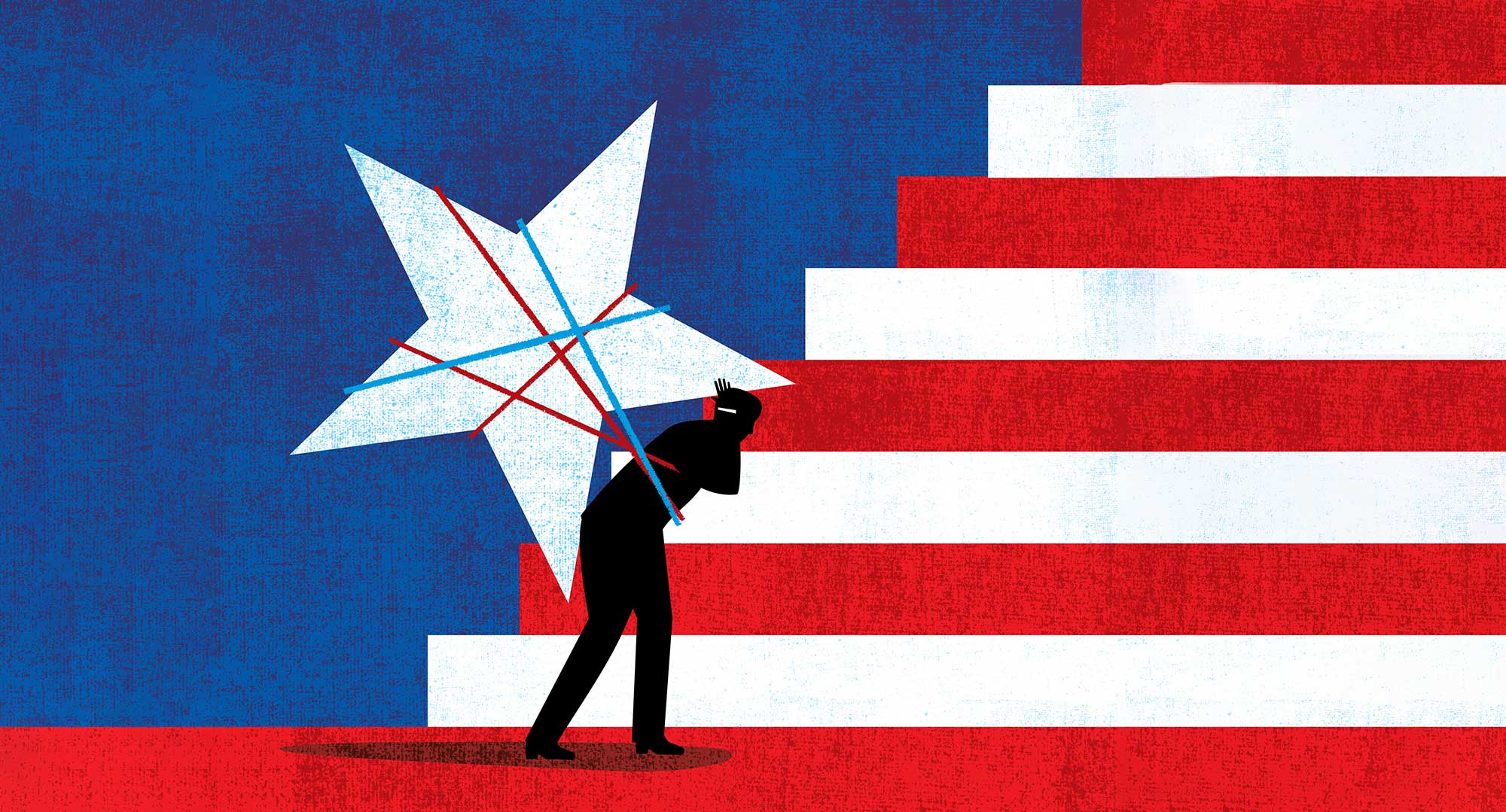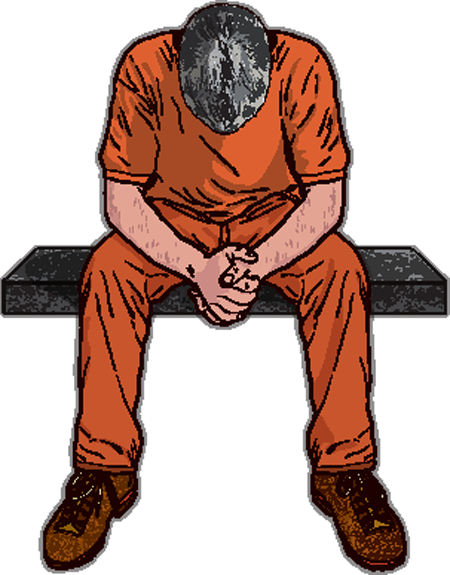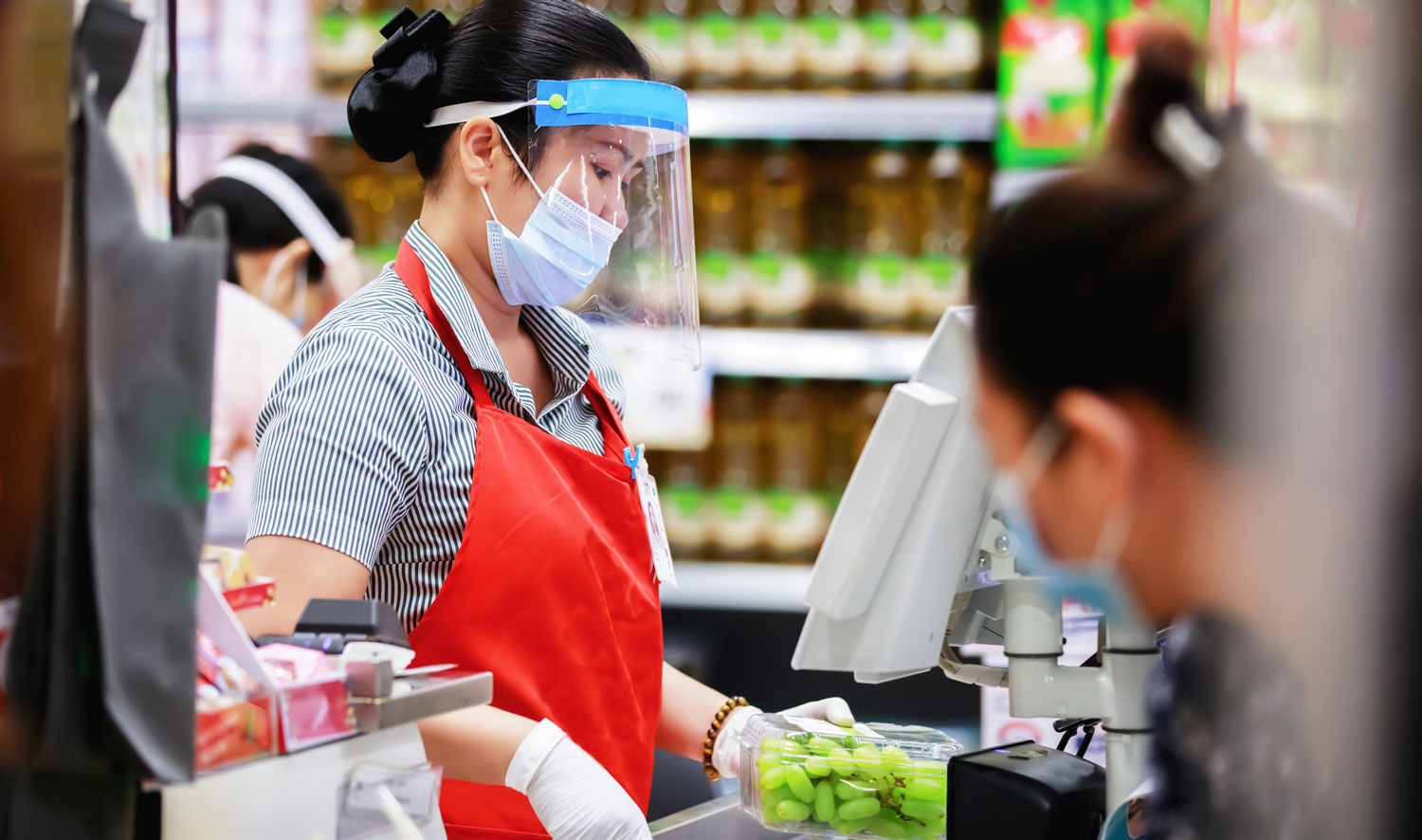


Shanghai, February 2020

Message from a Time Traveler
Except no one was really listening.
“It was really hard for everyone to grasp that something occurring so far away—in Wuhan, then in Italy, then Iran—was also going to happen here,” he says. But Professor Minzner had seen this kind of tragedy unfold before. He was in China in 2003 when SARS “blew up,” and the scenario with COVID-19 felt eerily similar: “The Chinese government initially played down the potential impact of SARS before finally putting effective measures into place.”
This time around, just three days after Professor Minzner arrived in Shanghai with his wife and 3-year-old for the second half of his Fulbright, Wuhan went into lockdown. “Things started happening very quickly,” he recalls. “Within 10 days, everything had changed.” All restaurants and public spaces were suddenly shuttered, travel restrictions were being put into place, and Shanghai, like Wuhan, was headed for a full-on residential lockdown. “It became clear that we were going to have real problems getting out of China if we needed to, so we decided to head back to Taiwan,” says Minzner.
This time, Taiwan was better prepared. “The government put an epidemiologist in charge, used the military to ramp up mask production—from 2 million to 20 million within weeks—and instituted effective quarantine procedures.” Just as important: “One hundred percent of the population wore masks,” he says. The results speak for themselves: In a country of 23 million, there were only 7 deaths and 530 cases as of October 13.
The pandemic, he predicts, will take those trends to the next level. For instance, African immigrants living in Guangzhou, in the southern part of China, have been subject to forced evictions. “When you feel as if you are under threat, the impulse is to blame outsiders,” he says.
Just as troubling, Minzner says, is the rapid breakdown of China–U.S. relations. “I’m really worried about the possibility of conflict,” says Minzner. “U.S.–China ties are snapping one after another—in education, business, and politically—as each country tries to lay the blame on the other.”
Yet after seeing firsthand what a coordinated, successful response to a global pandemic looks like in Taiwan, Minzner also sees reason for optimism. “Right now [in June of 2020], schools and restaurants in Taipei are open; citizens can go about their normal lives,” he says. “This is what’s possible when there is broad social consensus, effective leadership, and when everyone takes the pandemic seriously,” he says. “If you pull together, you can make a huge difference.”





Constitutional Rights = Human Rights
This year, during her sabbatical, Professor Powell will be looking to move that agenda forward with her writing and research. She is working part-time with the Washington, D.C.–based Leadership Conference on Civil and Human Rights. “We are looking at this moment of crisis as a chance to transform the system—beyond a set of legislative changes.” She’ll also be looking at the impact of our new stay-at-home economy on the nation’s most vulnerable laborers. “As the touchless economy continues to emerge, speeding the shift to a platform economy and gig workers, I’ll be looking at the effect on people of color and women—who tend to be most affected in moments of crisis and transition,” she says. “I’m excited to grab hold of this moment and to make some lasting change.”

Many elected officials are likely coming to the grim, immoral, cynical—but perhaps politically astute—conclusion that it is better for their political futures to let many people die and far more people contract the coronavirus in prison—preventable though those outcomes may be—than take the risk that one person released early commits a single, awful, headline-grabbing crime.
That politicians appear to feel this way now, when the risks posed by the coronavirus provide them with much more political cover to release people early from prison, suggests that they will be even more reluctant to push serious decarceration efforts when the fear of the virus has subsided. That’s not to say that significant decarceration is a quixotic goal, only that the COVID-19 epidemic has highlighted the significant political opposition that serious decarceration efforts will likely face in the years ahead.




Looking Out for Front-Line Workers Everywhere
These workers are vulnerable in another way: “They don’t have a lot of safety and health-related rights—including the right to PPE, to mandatory social-distancing rules at work, to hazard or premium pay, or to refuse to come in to work if conditions are unsafe,” says Brudney.
Then there’s the issue of paid sick leave, which is mandated in a handful of states. The federal CARES Act provides for only about one-fourth of all workers, and only during this emergency. “We need it to be available to everyone, as a general rule, along with a law mandating adequate PPE,” says Brudney, who points to instances where workers have sued for safer conditions. In two separate lawsuits against McDonald’s (in Illinois and California), state courts granted preliminary injunctive relief ordering the restaurants to provide masks, adequate training, safe distancing, and paid breaks every 30 minutes for handwashing.
Finally, Professor Brudney points to the passage of a special provision in the CARES Act that protects some 2 million employees in the heavily unionized airline industry. The union negotiated for compensation that would “directly pass through to the workers, so all of them would stay employed,” he explains, along with clauses that prohibited compensation for executives over a certain amount. “I think it bodes well that a highly unionized industry like that was able to secure considerably more protection than usual,” he says. “As an example of protecting workers’ rights while also preventing possibilities for further income inequality, we may have a model for other settings in the future.”

The economic rebound may be sufficiently swift and strong to enable this borrowing to get repaid, at least in part. But because I’m a bankruptcy lawyer, I tend to focus on the worst-case scenario contained in this half-empty glass—which is the near certainty that many will default. And, absent additional deferment and forbearance, this worst-case-scenario thinking leads me to the conclusion that bankruptcy filings will increase over time—substantially. For many, in other words, the federal government’s “helping hand” will later feel more like a slap in the face.

One thing that may come out of this, then, is that people will have a renewed appreciation for what the division of authority between cities and states really means. We now understand that it’s the leadership at the city level that really has to grapple with the fallout of this crisis for renters, for businesses, for public transportation, for the day-to-day quality of life. All of that gets managed at a local level. Ultimately, I believe there will be a stronger constituency for empowering cities.